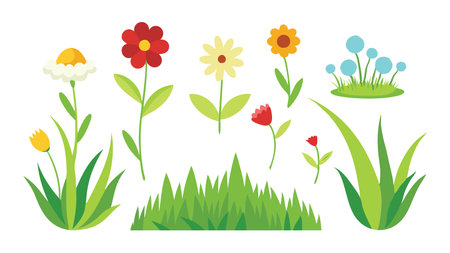Introduction to Garden Sprayers
Garden sprayers have become an essential tool for home gardeners and landscaping enthusiasts across the United States. Whether you’re managing a backyard vegetable patch, keeping ornamental shrubs healthy, or maintaining a lush lawn, these versatile devices help streamline tasks like watering, fertilizing, and applying pest or weed control products. In American gardening routines, garden sprayers save time and ensure that plants receive even and effective coverage with minimal effort. With so many types available, from compact pump sprayers to larger backpack models and convenient hose-end options, choosing the right one can make a significant difference in your gardening success and overall experience.
Backpack Sprayers
If you’re tackling larger yards or need to cover significant ground with minimal downtime, backpack sprayers could be your go-to choice. Designed for comfort and efficiency, these sprayers are worn like a backpack, letting you move freely around your property while keeping both hands available to operate the wand. They’re popular among avid gardeners and even pros for tasks like fertilizing lawns, applying herbicides, or treating trees and shrubs.
When Should You Use a Backpack Sprayer?
Backpack sprayers shine when you need to treat medium to large areas, or if your job requires frequent refills with smaller handheld models. They’re perfect for:
- Treating large lawns or garden beds
- Applying pesticides along fence lines or around the perimeter of your home
- Spraying fruit trees or tall shrubs
- Maintaining community gardens or small farms
Main Pros and Cons
| Pros | Cons |
|---|---|
| High capacity (typically 3–4 gallons) | Heavier than handheld models, especially when full |
| Hands-free operation allows for longer use | Takes time to properly clean after each use |
| Even spray coverage over wide areas | Might be overkill for small patios or container gardens |
| Pump-action design maintains consistent pressure | Not ideal for those with back or shoulder issues |
Tips for Comfortable and Safe Operation
- Adjust Straps Properly: Make sure the shoulder and chest straps are snug but not too tight, distributing weight evenly across your back.
- Don’t Overfill: Stay within the manufacturer’s fill line—overfilling makes the unit heavier and harder to carry.
- Take Breaks: If working for an extended period, rest every 20–30 minutes to prevent fatigue.
- Use Personal Protective Equipment: Wear gloves, goggles, and long sleeves when handling chemicals.
- Clean After Every Use: Rinse the tank and nozzle thoroughly to prevent clogs and chemical buildup.
Is a Backpack Sprayer Right for You?
If your gardening projects regularly require spraying larger areas—or if you want a tool that balances capacity with portability—a backpack sprayer is probably worth considering. Just remember that it does take some getting used to in terms of weight and maintenance. For many American homeowners with mid-sized yards, this option hits the sweet spot between convenience and power.

3. Pump Sprayers
Pump sprayers are a staple in many American backyards and gardens, valued for their versatility and ease of use. These handheld or shoulder-carried devices operate with a simple hand-pump mechanism, allowing you to build up pressure inside the tank before spraying. This design makes them perfect for small to medium-sized garden tasks, such as applying weed killers, insecticides, fertilizers, or even just water to delicate plants. Pump sprayers typically hold between 1 to 3 gallons, which is ideal for targeting specific areas without hauling around heavy equipment. Most Americans use pump sprayers for spot treatments—think spraying dandelions popping up in your lawn or treating a rose bush with fungicide. They’re also great for applying homemade solutions like vinegar mixes or organic pest repellents. Since they don’t require batteries or access to a hose, pump sprayers offer flexibility whether you’re working in the vegetable patch at the far end of your yard or tending container plants on your porch. For best results, remember to clean the sprayer thoroughly after each use and check that all seals and nozzles are free from clogs or leaks. This basic maintenance ensures your pump sprayer is ready whenever the next gardening task pops up.
4. Hose-End Sprayers
When it comes to covering large areas quickly, hose-end sprayers are a go-to choice for many American homeowners. These sprayers attach directly to your garden hose, using water pressure to mix and distribute fertilizers, pesticides, or weed killers evenly across your lawn or garden. Their convenience shines through in their simplicity—just fill the reservoir with your chosen liquid treatment, set the dial to the desired concentration, and start spraying. This makes them especially appealing for anyone looking to treat expansive lawns, flower beds, or even vegetable gardens without spending hours refilling or pumping.
Why Choose a Hose-End Sprayer?
Hose-end sprayers are ideal for fast application over wide spaces. Unlike pump or backpack models, they allow you to work continuously as long as you have access to a water source. Theres minimal physical strain since you dont need to carry heavy tanks or repeatedly pump to maintain pressure. Plus, adjusting the dilution rate is usually as easy as twisting a knob—making it simple to switch between products or tailor the strength to your plants needs.
Popular Uses for Hose-End Sprayers
| Application | Benefits |
|---|---|
| Lawn Fertilizing | Covers large yards efficiently; ensures even distribution |
| Pest Control | Quickly treats lawns and shrubs; easy mixing of concentrates |
| Weed Killing | Targets broad areas; convenient for spot treating patches |
Considerations Before Buying
If your property has a reliable outdoor water connection and you regularly treat large sections of grass or plantings, a hose-end sprayer can save considerable time and effort. However, keep in mind that precise spot treatments may be more challenging compared to pump or backpack models. Also, these sprayers rely on consistent water pressure—low pressure may result in uneven coverage. For most suburban lawns and fast seasonal applications, though, hose-end sprayers offer unbeatable speed and convenience.
5. Which Sprayer Is Right for You?
Choosing the perfect garden sprayer really comes down to a few important factors: your garden size, the types of plants you’re caring for, and what typical tasks you need to tackle—especially when thinking about common U.S. landscaping scenarios like managing sprawling lawns or tending colorful flower beds.
For Small Yards and Flower Beds
If you have a modest backyard, raised vegetable beds, or a few patio planters, a pump sprayer is usually your best bet. These handheld models are easy to control, lightweight, and ideal for spot treatments—think feeding roses, controlling weeds in a small space, or applying pest control to herbs. They’re convenient for quick jobs and won’t take up much storage space in your garage or shed.
For Larger Lawns and Multiple Plant Types
For bigger suburban lawns or properties with diverse plantings (shrubs, trees, hedges), backpack sprayers shine. Their larger capacity—often two to four gallons—means fewer trips back to refill. Plus, they’re designed for comfort during longer use, making them perfect for applying weed killer across a wide lawn or fertilizing lots of shrubs at once. Backpack sprayers also offer more even coverage, which is crucial if you want that lush American green-lawn look without missing spots.
For Quick Lawn Treatments
If your main goal is feeding or treating your lawn and you already have a hose handy, hose-end sprayers are super convenient. Just attach the bottle to your garden hose and you’re ready to cover large grassy areas quickly—ideal for annual weed prevention or spreading liquid fertilizer before summer BBQ season. They’re not as precise as other sprayers but win big on speed and ease for broad applications.
Consider Your Routine Tasks
Think about what you do most often: Are you spraying delicate flowers, treating fruit trees, or just keeping your front yard grass green? In the U.S., where seasons can bring everything from crabgrass invasions to aphids on tomatoes, having the right sprayer can make garden chores easier—and more effective.
Pro Tip
If you have both lawn and ornamental gardens, you might want more than one sprayer to avoid cross-contamination (like accidentally spraying herbicide on your prized petunias).
6. Care, Maintenance, and Safety Tips
Proper care and maintenance of your garden sprayer are crucial for longevity and reliable performance, especially when dealing with the diverse climates and gardening needs found across the U.S. Below, youll find essential guidelines on cleaning, storing, and safely using backpack, pump, and hose-end sprayers—plus tips specific to common American garden chemicals.
Cleaning Your Sprayer
Always clean your sprayer thoroughly after each use. Rinse the tank with water, then run clean water through the nozzle to prevent clogs from dried chemicals. For tougher residues—like those left by fertilizers or herbicides—use a mild detergent solution. Avoid harsh chemicals that can damage seals or hoses.
Proper Storage Techniques
Store your sprayer in a dry, sheltered area away from direct sunlight to prevent UV damage to plastic parts. In colder U.S. regions, ensure all water is drained before winter storage to avoid freezing and cracking. Remove batteries from battery-powered models during long-term storage.
Seasonal Considerations
If you live in humid areas like the Southeast, extra care should be taken to keep tanks dry inside to prevent mold growth. In arid Western states, check rubber gaskets for drying or cracking more frequently.
Safe Use of Garden Chemicals
Read all product labels carefully and follow mixing instructions exactly—over-concentration can harm plants and the environment. Wear protective gloves, goggles, and long sleeves when spraying pesticides or herbicides commonly used in American gardens. Never mix different chemicals unless the label specifically allows it.
Disposal of Leftover Solutions
Do not pour leftover spray solutions down household drains or storm sewers. Instead, use them up according to label directions or take them to a local hazardous waste disposal site as recommended by EPA guidelines.
Regular Maintenance Checks
Inspect seals, hoses, and nozzles regularly for leaks or wear—these are common issues due to varying temperatures across the U.S. Lubricate moving parts as needed with manufacturer-recommended products. Replace worn parts promptly to maintain optimal pressure and spray patterns.
By following these maintenance and safety guidelines tailored for American gardeners, you’ll get better results from your backpack, pump, or hose-end sprayer while keeping yourself and your landscape safe year-round.


